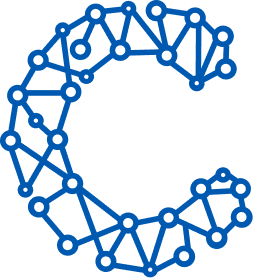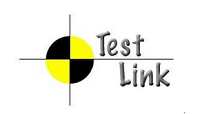Description

Cerebry

TestLink
Comprehensive Overview: Cerebry vs TestLink
Cerebry and TestLink are distinct software products that cater to different aspects of testing and education, each serving its target market with unique functionalities. Below is a comprehensive overview of both:
Cerebry
a) Primary Functions and Target Markets
-
Primary Functions: Cerebry is an AI-driven educational tool focused on adaptive learning. It provides personalized learning experiences by generating unique problem sets for students and offering real-time feedback and remediation. The platform leverages artificial intelligence to identify student weaknesses and adapt content to individual learning paces and styles.
-
Target Markets: Cerebry primarily targets the education sector, including schools, universities, and tutoring centers. It is designed for educators who aim to enhance student engagement and improve learning outcomes through personalized education strategies.
b) Market Share and User Base
-
Market Share: As a specialized tool, Cerebry occupies a niche within the educational technology landscape, competing with other adaptive learning platforms. Its market share depends on its adoption among educational institutions looking for AI-powered solutions.
-
User Base: The user base includes teachers, students, and educational administrators who implement adaptive learning methods. Although not as widely known as larger platforms like Khan Academy, its user base consists of institutions seeking innovative educational technologies.
c) Key Differentiating Factors
- Personalization: Cerebry's strength lies in its ability to create highly personalized learning experiences using AI.
- Real-time Feedback: Offers instant feedback and remediation, which is pivotal for adaptive learning.
- AI-Driven Analytics: Provides detailed analytics on student performance and learning patterns to educators.
TestLink
a) Primary Functions and Target Markets
-
Primary Functions: TestLink is an open-source test management tool. It facilitates the creation, management, and execution of test cases and test plans. TestLink provides features for requirement tracking, reports, and test case execution histories.
-
Target Markets: Targeted primarily at quality assurance (QA) teams in software development, TestLink is used by organizations that require structured testing processes. It is suitable for businesses of all sizes that wish to manage their testing pipeline more effectively.
b) Market Share and User Base
-
Market Share: As an open-source solution, TestLink is widely used among developers and QA professionals, especially in environments that favor customizable software and budget-conscious management.
-
User Base: The user base typically consists of QA teams, software developers, and IT departments across various industries that require thorough testing procedures to maintain software quality. Its open-source nature has allowed it to build a solid user community.
c) Key Differentiating Factors
- Open Source Flexibility: TestLink offers the flexibility and community support typical of open-source tools. Users can customize and extend the software to meet specific needs.
- Integration Capabilities: Integrates with various other bug tracking tools like JIRA and Bugzilla, making it adaptable to existing development workflows.
- Cost-Effectiveness: As a free tool, it provides a cost-effective solution for test management, appealing to organizations looking to minimize expenses without foregoing robust testing processes.
Comparison and Key Differences
- Functionality: Cerebry focuses on adaptive learning in education, while TestLink is centered around test management in software development.
- Target Markets: Cerebry targets the educational sector, whereas TestLink serves the software development industry.
- Technical Approach: Cerebry uses AI to deliver personalized learning experiences, whereas TestLink provides an open-source platform for managing and executing test cases.
- Market Positioning: Cerebry is more specialized and niche, while TestLink capitalizes on the open-source market to gain widespread usage among QA teams.
These products each address specific needs within their respective domains, offering unique advantages that align with the priorities of their target users.
Contact Info

Year founded :
2017
+91 74836 96216
Not Available
Singapore
http://www.linkedin.com/company/cerebry

Year founded :
Not Available
Not Available
Not Available
Italy
Not Available
Feature Similarity Breakdown: Cerebry, TestLink
Cerebry and TestLink are tools used primarily in the domain of software testing and quality assurance, but they serve somewhat different purposes and cater to different aspects of this domain. Below is a feature similarity breakdown of both products as of the latest available information:
a) Core Features in Common
-
Test Management:
- Both Cerebry and TestLink provide capabilities to create, organize, and manage test cases efficiently. They allow users to document and manage test cases which is essential for maintaining test procedures and ensuring coverage.
-
Test Execution:
- These tools enable users to execute test cases and log the results. They both support running tests and tracking the outcomes for further analysis and reporting.
-
Reporting and Analytics:
- Both products offer some form of reporting capabilities, allowing users to generate reports based on test execution results, which is crucial for assessing test coverage and identifying defects.
-
Collaboration:
- Cerebry and TestLink permit multiple users to work on test plans and test cases, promoting team collaboration. Users can assign tests to different team members and track progress comprehensively.
b) User Interface Comparison
-
TestLink:
- TestLink's user interface is more traditional and might feel a bit dated compared to modern SaaS products. It is generally functional but can appear cluttered to new users. Its design focuses on practicality with emphasis on forms and list views that facilitate navigation through test cases and projects.
- The UI is web-based, which makes it accessible on various platforms, but it might require some training to use efficiently due to its comprehensive feature set.
-
Cerebry:
- The UI is noted for being more modern and intuitive, often with a focus on providing a streamlined experience that might be more visually appealing and easier for new users to navigate. Cerebry likely emphasizes user experience and simplicity, possibly incorporating more graphical elements and customizable dashboards.
- Again, web-based access ensures broader compatibility with various devices and operating systems, maintaining usability across different technology environments.
c) Unique Features
-
Cerebry:
- Often integrates AI/ML features for smarter testing processes, which can include test case generation, defect prediction, and even test automation capabilities. This makes it stand out for organizations looking to leverage advanced technological capabilities in their testing processes.
- Cerebry might also prioritize integration with modern CI/CD tools and workflows, enhancing its appeal to development teams focused on Agile and DevOps methodologies.
-
TestLink:
- As a mature open-source test management tool, TestLink offers strong customization capabilities and user community support. This is particularly appealing for organizations looking for cost-effective solutions with the ability to tailor features to specific needs.
- Extensive integration options with third-party bug tracking and automation tools, such as Jira, Bugzilla, and Selenium, which can be crucial for organizations with established testing ecosystems.
In summary, while both Cerebry and TestLink offer foundational test management capabilities, they differ significantly in terms of user interface and unique features, with Cerebry possibly having a more modern approach and TestLink offering greater customization and integration options. The choice between the two would depend on the specific requirements, team preferences, and existing toolchain of an organization.
Features

Not Available

Not Available
Best Fit Use Cases: Cerebry, TestLink
Cerebry and TestLink are distinct tools catering to different needs within organizations, particularly focusing on educational and software testing aspects, respectively. Here's a deeper dive into their use cases, suitable scenarios, and how they cater to various industry verticals and company sizes:
Cerebry
a) Best Fit Use Cases for Cerebry:
Cerebry is an AI-powered platform designed with educational contexts in mind. It can be particularly beneficial for:
-
Educational Institutions: Schools, colleges, and universities looking to enhance their teaching methodologies can leverage Cerebry to provide personalized learning experiences tailored to each student’s needs. Its AI capabilities help in adapting lessons to suit individual learning paces and styles.
-
E-Learning Platforms: Companies that offer online courses can integrate Cerebry to provide customized learning journeys, which can increase student engagement and improve educational outcomes.
-
Corporate Training Programs: Businesses with robust employee training protocols can use Cerebry to tailor training modules according to the specific needs or skill gaps of their workforce, thereby improving the efficiency of learning and development programs.
Cerebry’s use of AI to personalize learning paths makes it ideal for any educational or training-centric entity aiming to innovate or improve the effectiveness of their program delivery.
TestLink
b) Preferred Scenarios for TestLink:
TestLink is an open-source test management tool employed extensively in the software development lifecycle. Its use cases are more suited to:
-
Software Development Companies: Organizations focused on software product development can benefit from TestLink’s capabilities in managing test cases, planning, and executing test strategies. It provides an integrated environment that supports test management processes, which are critical for ensuring software quality.
-
Quality Assurance (QA) Teams: TestLink is an excellent tool for teams dedicated to QA, as it assists in organizing and tracking test cases, managing test projects, and enhancing collaboration among team members, thus improving the quality assurance process.
-
Agile and DevOps Teams: In agile and DevOps environments, where continuous integration and testing are crucial, TestLink can help streamline testing processes and facilitate better communication among distributed teams.
d) Industry Verticals and Company Sizes:
-
Cerebry: Typically serves the education sector and any organization with a strong focus on training and development. It is suitable for institutions or companies of all sizes, from small educational startups to large universities and corporations with extensive training programs. Industries like education, corporate training, and e-learning are primary consumers.
-
TestLink: Primarily serves the software development industry. It is versatile enough to be used by small startups with minimal testing resources or large enterprises with elaborate software testing protocols. Various verticals, including IT services, software consulting, and any technology-driven company needing robust testing frameworks, benefit from TestLink. Small to medium enterprises (SMEs) and larger corporations engaged in continuous software development may find it particularly advantageous.
In summary, Cerebry excels in environments where personalized learning is pivotal, while TestLink thrives in scenarios demanding detailed and structured test management, catering respectively to the education and software development realms.
Pricing

Pricing Not Available

Pricing Not Available
Metrics History
Metrics History
Comparing teamSize across companies
Conclusion & Final Verdict: Cerebry vs TestLink
To provide a comprehensive conclusion and final verdict for Cerebry and TestLink, let's evaluate the overall value, pros and cons, and specific recommendations for potential users.
Conclusion and Final Verdict
a) Overall Value
When considering overall value, the best choice between Cerebry and TestLink largely depends on the specific needs and context of the user or organization:
-
Cerebry may offer better value for users seeking a modern, intuitive, and AI-driven test management solution. Its innovative features and potential for enhanced productivity might justify a higher investment for tech-savvy environments or those prioritizing cutting-edge technology.
-
TestLink, as an open-source and cost-effective option, delivers solid value for organizations where budget constraints are a significant factor and where a traditional test management system suffices, even if it means sacrificing some advanced features.
Ultimately, users need to weigh the importance of advanced features versus cost when determining the best overall value.
b) Pros and Cons
Cerebry:
-
Pros:
- Advanced Features: Offers AI-driven testing capabilities, which can enhance efficiency and accuracy.
- User Interface: Typically modern and user-friendly, providing an easy learning curve.
- Scalability: May offer better scalability options for growing organizations.
-
Cons:
- Cost: Potentially higher costs associated with licensing and subscription.
- Complexity: Advanced features may have a steeper learning curve for teams unfamiliar with AI tools.
TestLink:
-
Pros:
- Cost-Effective: Being open-source, it has minimal initial costs, aside from any hosting or support expenses.
- Comprehensive Features: Offers essential test management functionalities that can cover most use cases.
- Community Support: A robust community that can aid with troubleshooting and feature enhancements.
-
Cons:
- User Interface: May feel outdated or less intuitive compared to modern counterparts.
- Limited Advanced Features: Lacks some of the cutting-edge functionalities and automation available in newer tools.
- Scalability Issues: Could face performance limitations in larger, more complex implementations.
c) Specific Recommendations
-
Assess Organizational Needs: Before deciding, clearly define the specific requirements of your testing processes. If advanced features and automation are critical, Cerebry may be the better option. For basic testing needs, TestLink is sufficient and cost-effective.
-
Consider Budget Constraints: Smaller teams or those with limited budgets should prioritize TestLink to keep costs low, while larger enterprises with more flexible budgets might consider investing in Cerebry’s capabilities.
-
Evaluate Technical Expertise: Teams with a strong technical background might benefit more from Cerebry’s advanced functionalities, whereas TestLink is more suitable for teams seeking straightforward, less complex solutions.
-
Plan for Future Growth: Consider the long-term needs of your organization. If you anticipate growth or increased complexity in testing needs, Cerebry might offer the scalability required for future expansions.
Ultimately, the choice between Cerebry and TestLink should be driven by a careful assessment of organizational needs, budgetary considerations, and long-term strategic goals.
Add to compare
Add similar companies



